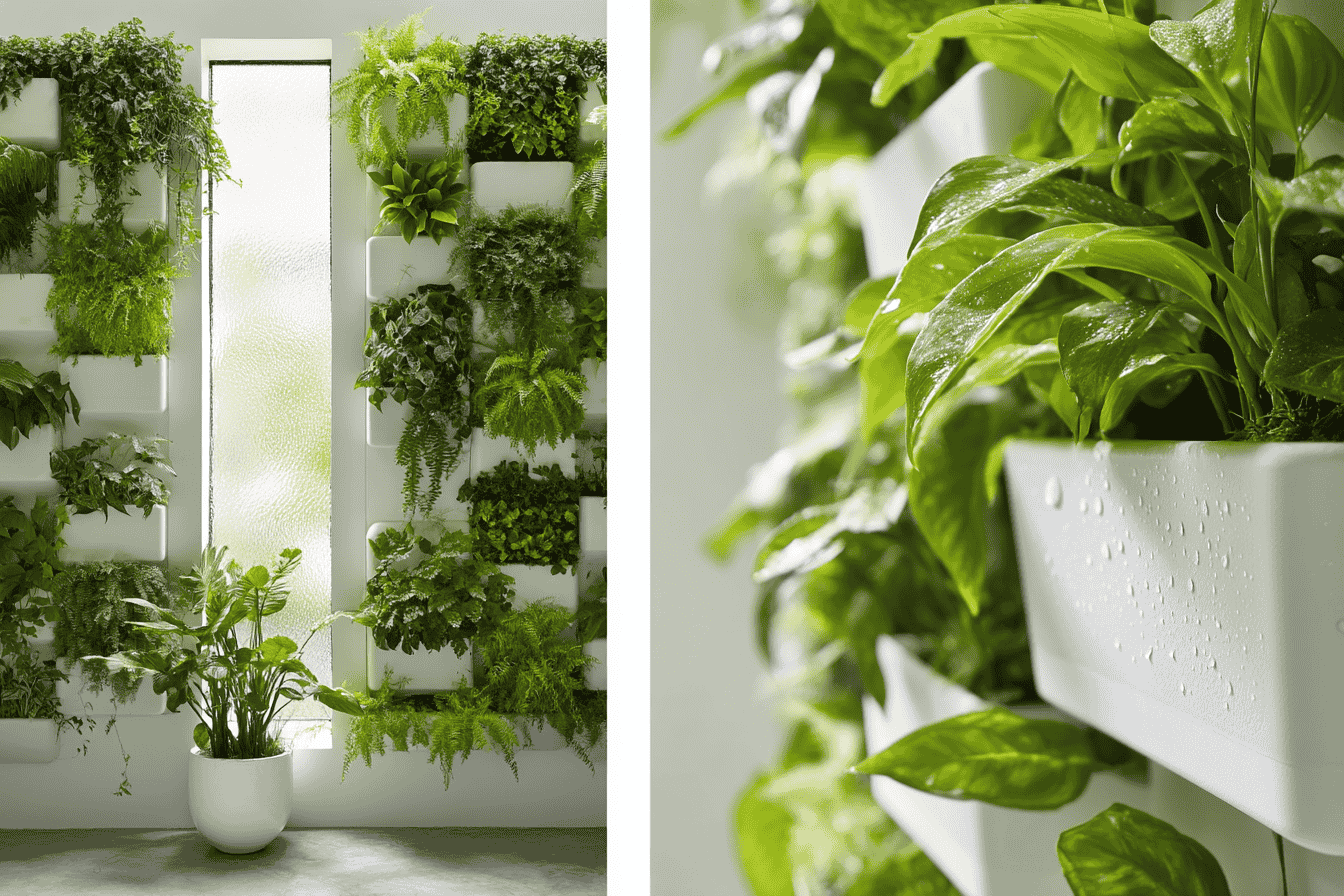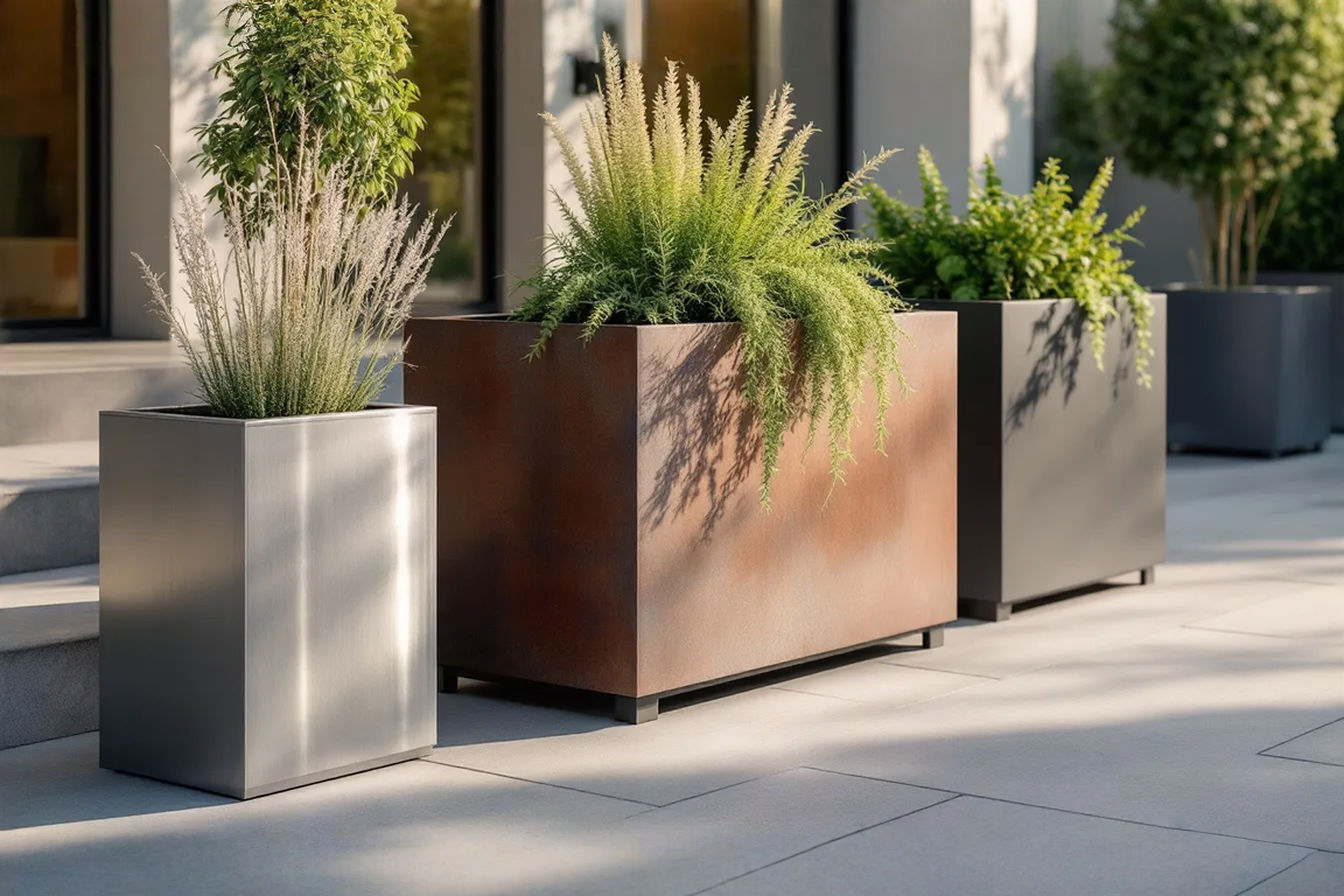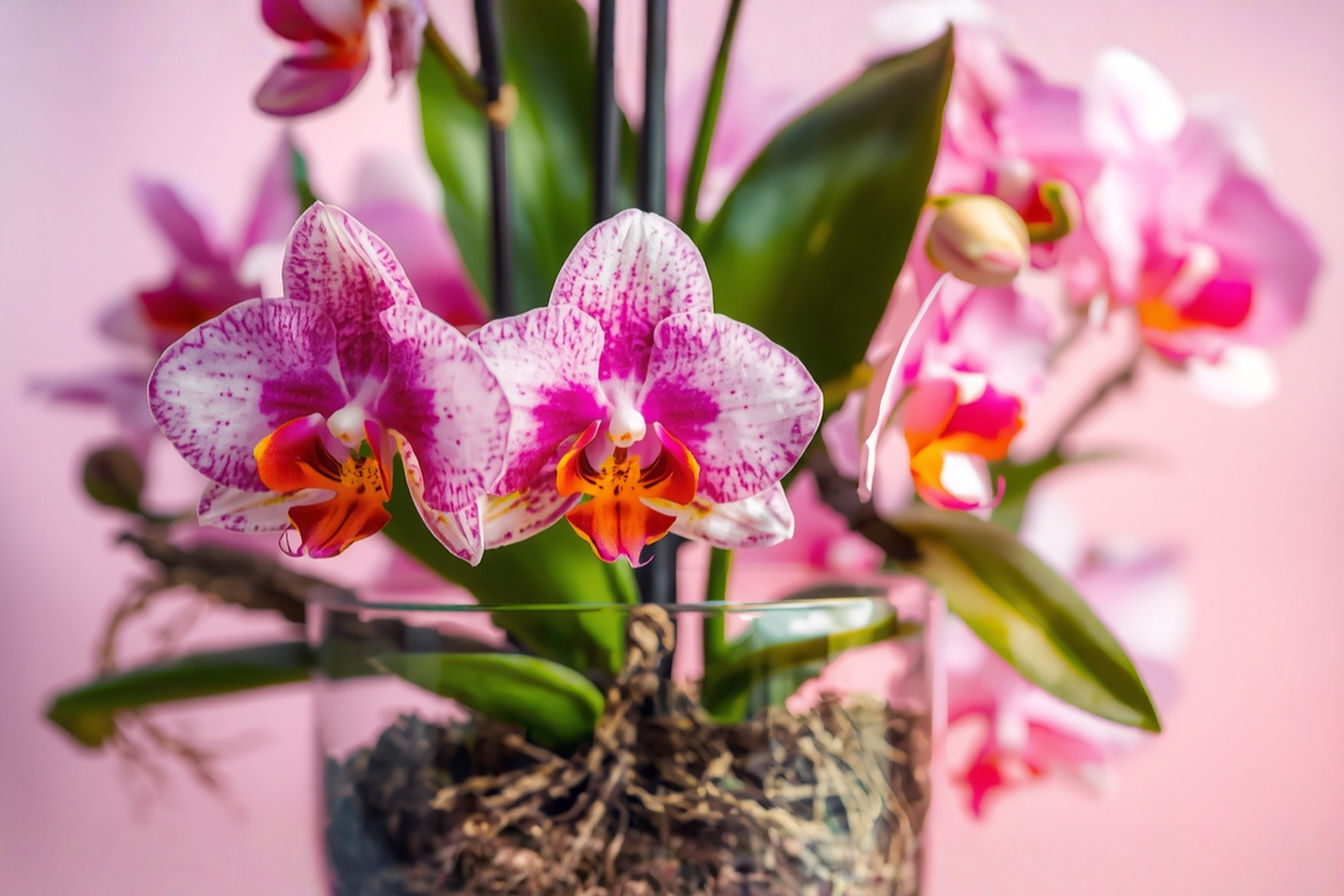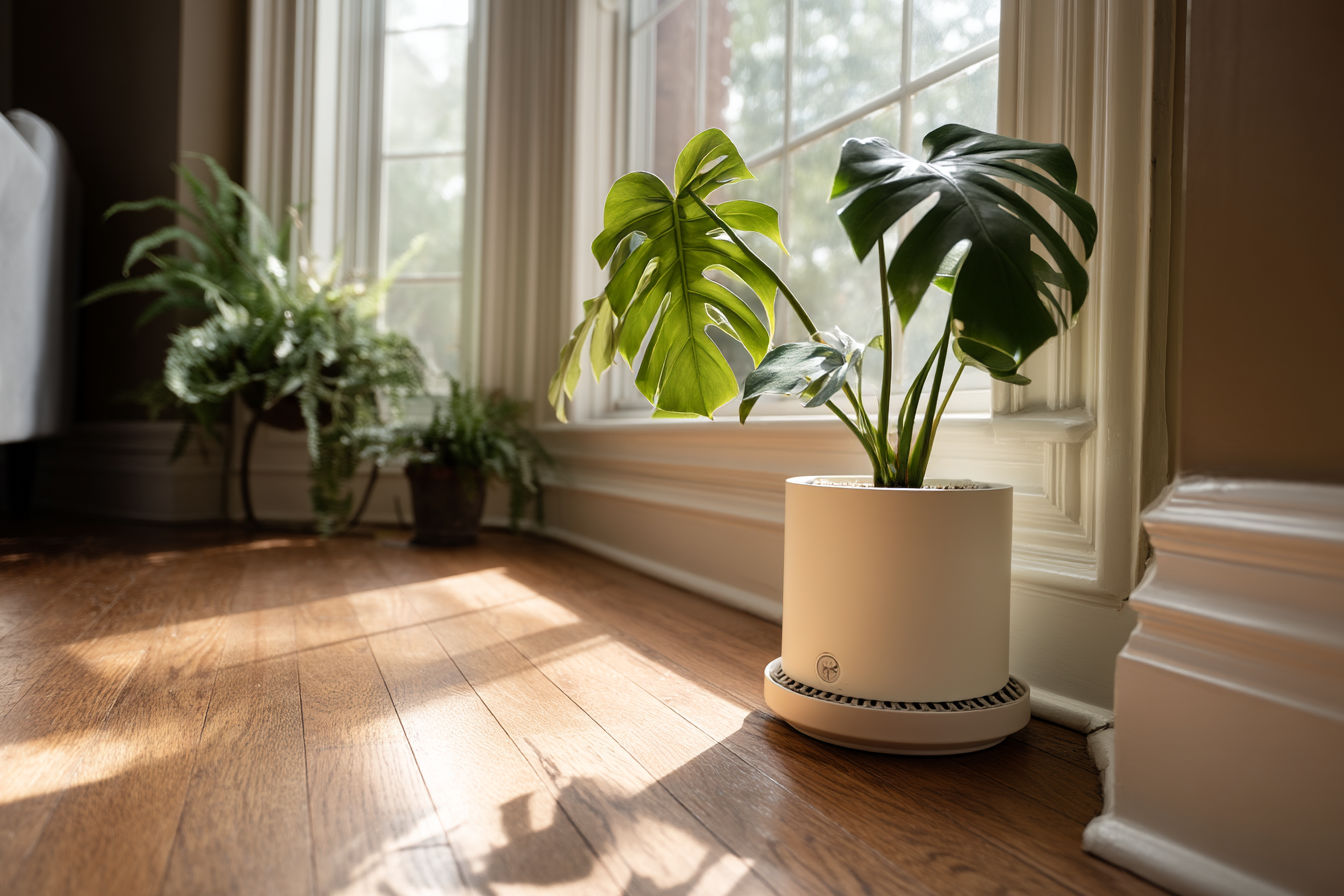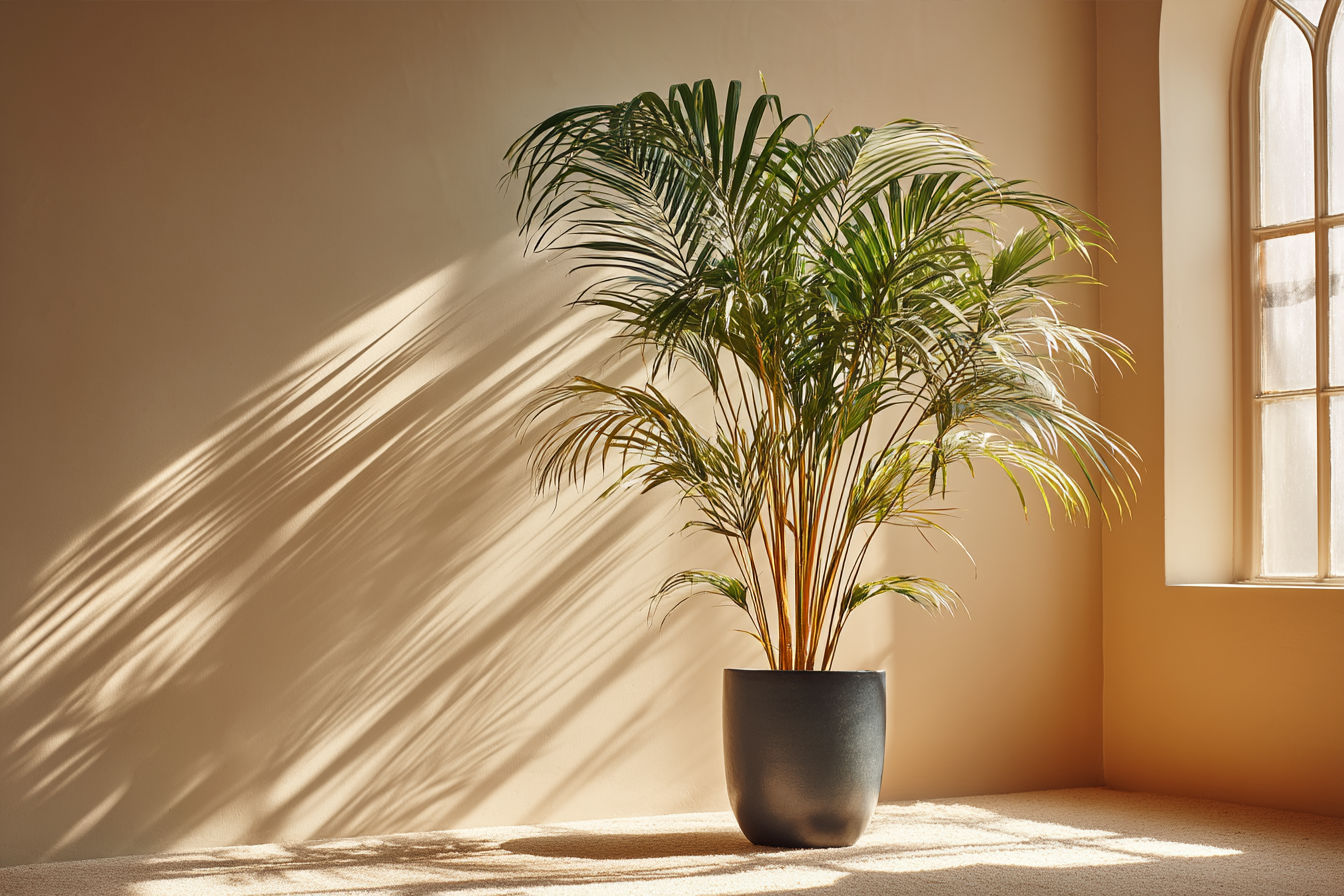This post may contain affiliate links. If you make a purchase through these links, we may earn a commission at no additional cost to you.
Succulents have taken the plant world by storm, becoming favorites for both new plant parents and experienced gardeners. These charming plants store water in their leaves, stems, or roots, giving them their distinctive plump, fleshy appearance. Their unique shapes, colors, and textures range from the spiral rosettes of Echeverias to the trailing pearls of Senecio rowleyanus, making them living art pieces for any space.
Growing succulents offers many benefits beyond their eye-catching beauty. They thrive with minimal care, making them perfect companions for busy people or those who don’t have a natural green thumb. Most succulents need watering only once every few weeks, unlike thirstier houseplants that demand constant attention. Their compact size works well in small apartments, dorm rooms, or offices where space comes at a premium.
What truly sets succulents apart from other houseplants is their remarkable adaptability. These resilient plants evolved in some of Earth’s harshest environments, from scorching deserts to high mountain ranges. This natural toughness translates to indoor growing conditions, where they forgive occasional neglect far better than most plants. Their ability to store water means they can survive dry spells that would kill less hardy plants.
Succulents also excel as air purifiers, releasing oxygen and filtering indoor air pollutants. Many people find that adding these plants to their living spaces creates a sense of calm and connection to nature. Their slow growth pattern means you can enjoy them for years with just basic care.
The versatility of succulents makes them ideal for countless creative projects. From elegant container gardens to living walls, terrariums, and even wedding decorations, these plants adapt to many design ideas. Their ability to root easily from cuttings also means you can share your plants with friends and expand your collection without spending extra money.
Whether you’re a complete beginner or looking to improve your succulent care routine, this guide will walk you through everything you need to know to help these fascinating plants thrive in your home.
Essential Succulent Growing Conditions
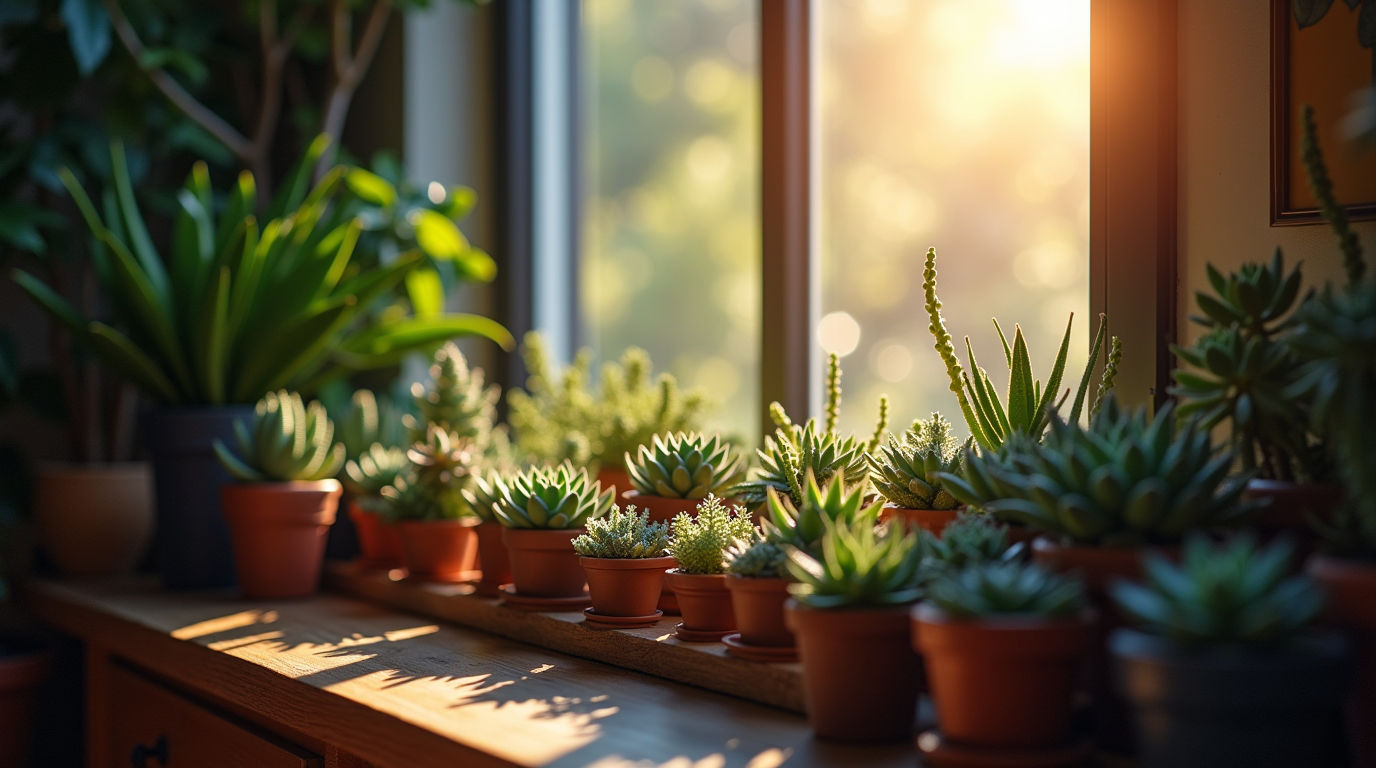
Finding the Perfect Light Balance
Light is the most critical factor for succulent health. These sun-loving plants typically need at least 6 hours of bright light daily to maintain their compact shape and vibrant colors. Without sufficient light, succulents become etiolated—stretching toward light sources and losing their characteristic form.
Most succulents thrive in south or east-facing windows where they receive bright, indirect light throughout the day. However, not all succulents have identical light requirements:
| Light Preference | Succulent Types | Signs of Correct Light | Signs of Incorrect Light |
|---|---|---|---|
| Full Sun (6+ hrs) | Echeveria, Sedum, Agave | Compact growth, vibrant colors | Pale color, stretching upward |
| Bright Indirect | Haworthia, Gasteria, Sansevieria | Steady growth, rich coloration | Slow growth or sunburn |
| Partial Sun (3-6 hrs) | Some Aloe, Jade plants | Balanced growth, good color | Leaning or scorched leaves |
| Low Light Tolerant | Sansevieria, Haworthia | Stable, though slower growth | Very slow growth, no flowering |
Pro tip: Gradually introduce indoor succulents to outdoor sunlight to prevent sunburn. Start with morning sun only and slowly increase exposure over 1-2 weeks.
Temperature Requirements for Thriving Plants
While succulents are adaptable, most prefer temperatures between 60-80°F (15-27°C) during active growth periods. What many new growers don’t realize is that temperature fluctuations can actually benefit succulents, mimicking their natural desert environments where days are warm and nights are cool.
Most houseplant succulents can tolerate:
- Minimum temperatures of 40°F (4°C)
- Maximum temperatures of 90°F (32°C)
Be aware that cold drafts from windows or hot air from heating vents can damage succulents. Keep plants away from these temperature extremes for best results.
Strategic Placement in Your Home
The best locations for your succulents depend on your home’s specific conditions:
- South-facing windows provide ideal light for most varieties
- East-facing windows offer gentle morning sun, perfect for sensitive types
- West-facing windows provide afternoon sun but may require monitoring for heat buildup
- North-facing windows typically don’t provide enough light unless supplemented
Outdoor placement works wonderfully in appropriate climates. Place containers where they receive morning sun but afternoon shade in hot regions. In cooler climates, give them full sun exposure.
For homes with limited natural light, grow lights can supplement or replace window light. Position grow lights 6-12 inches above plants and keep them on for 12-14 hours daily to simulate natural conditions.
Remember that proper placement isn’t just about survival—it’s about helping your succulents display their most beautiful colors and compact growth forms.
Soil and Potting Succulents
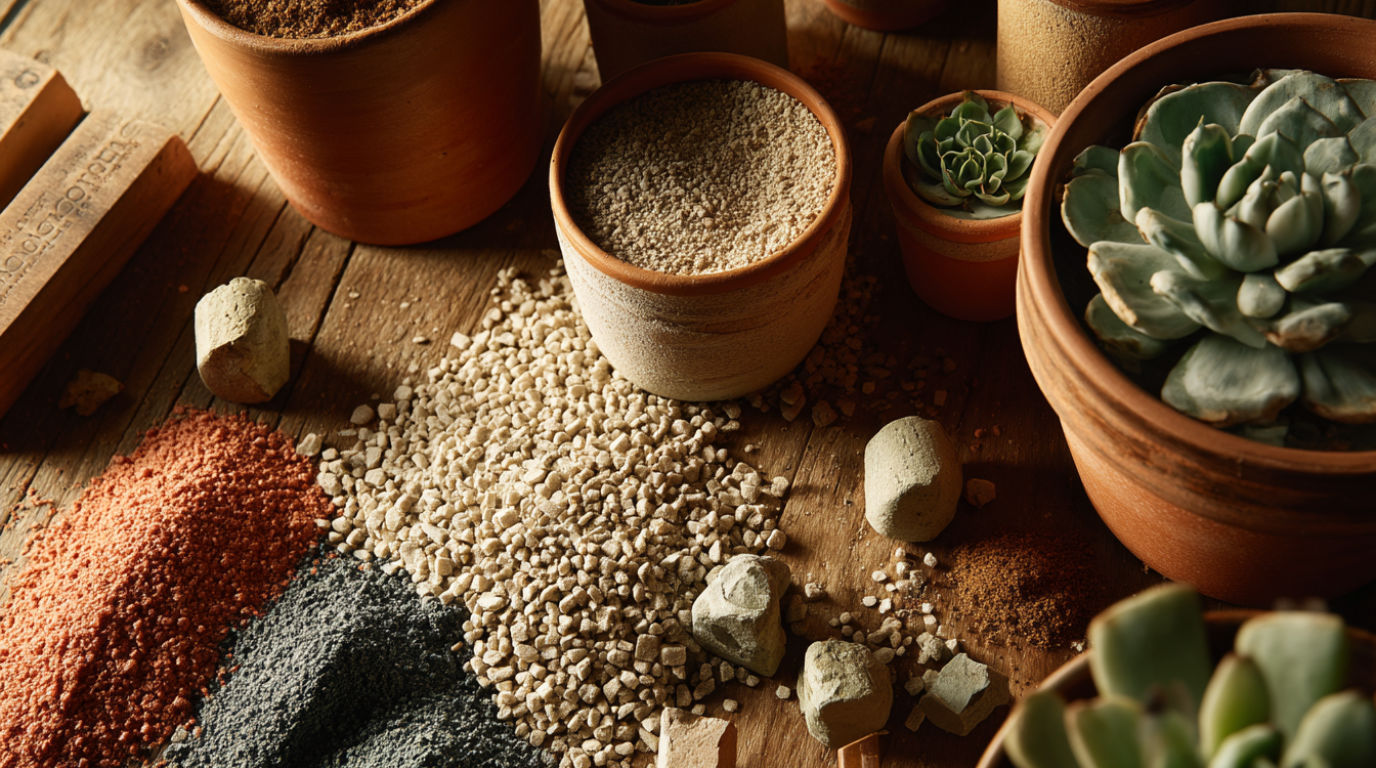
Creating the Ideal Growing Medium
The right soil mixture is fundamental to succulent health. Unlike traditional houseplants, succulents require soil that drains quickly and doesn’t retain excessive moisture. Their natural habitats feature sandy, rocky soils where water doesn’t linger around sensitive roots.
The perfect succulent soil balances three key components:
| Component | Purpose | Recommended Ratio |
|---|---|---|
| Mineral Grit | Provides drainage and prevents compaction | 50-70% |
| Organic Matter | Supplies nutrients and some moisture retention | 30-50% |
| Activated Charcoal | Optional: Improves drainage and prevents bacterial growth | 5-10% |
For mineral grit, you can use:
- Coarse sand (not beach sand)
- Perlite
- Pumice
- Small gravel or crushed granite
For organic matter, consider:
- Cactus/succulent potting mix
- Regular potting soil (use sparingly)
- Coconut coir (a sustainable alternative to peat)
Never use garden soil, beach sand, or moisture-retaining potting soils designed for tropical plants. These materials hold too much water and can quickly lead to root rot.
Selecting the Perfect Containers
The right pot makes a tremendous difference in succulent health. Container selection should prioritize:
- Drainage holes – Absolutely essential for excess water to escape
- Material type – Affects moisture retention and root temperature
- Size – Should accommodate roots with minimal excess soil
- Depth – Matches the root system of your specific succulent type
Different container materials offer distinct advantages:
| Container Material | Pros | Cons | Best For |
|---|---|---|---|
| Terracotta/Clay | Breathable, absorbs excess moisture | Breakable, heavier | Most succulents, especially those prone to overwatering |
| Ceramic | Attractive, stable | Less breathable, breakable | Display plants, decorative arrangements |
| Plastic | Lightweight, inexpensive | Retains moisture, can tip over | Propagation, temporary housing |
| Glass | Visually appealing | No drainage, high humidity | Temporary displays, terrariums (with care) |
| Metal | Modern aesthetic | Can heat up, potential rust | Indoor display in moderate temperatures |
Pro tip: For shallow-rooted succulents like Echeveria, choose wide, shallow pots. For succulents with taproots like Euphorbia, select deeper containers that accommodate downward growth.
Mastering the Drainage Game
Proper drainage is the cornerstone of succulent survival. Even with the right soil mix, containers must allow water to flow freely away from roots.
To optimize drainage:
- Always select pots with drainage holes or drill your own
- Add a drainage layer of coarse material at the bottom (1/4 to 1/2 inch)
- Elevate outdoor pots slightly using pot feet or small stones
- Never let pots sit in water – empty saucers promptly after watering
If using decorative containers without drainage holes, employ the “pot-in-pot” method:
- Plant your succulent in a well-draining smaller pot
- Place this pot inside the decorative container
- Remove the inner pot for watering, allowing complete drainage
- Return to the decorative pot only when no more water drips out
This approach lets you enjoy attractive containers while still providing the essential drainage your succulents require to thrive long-term.
Succulent Watering Techniques
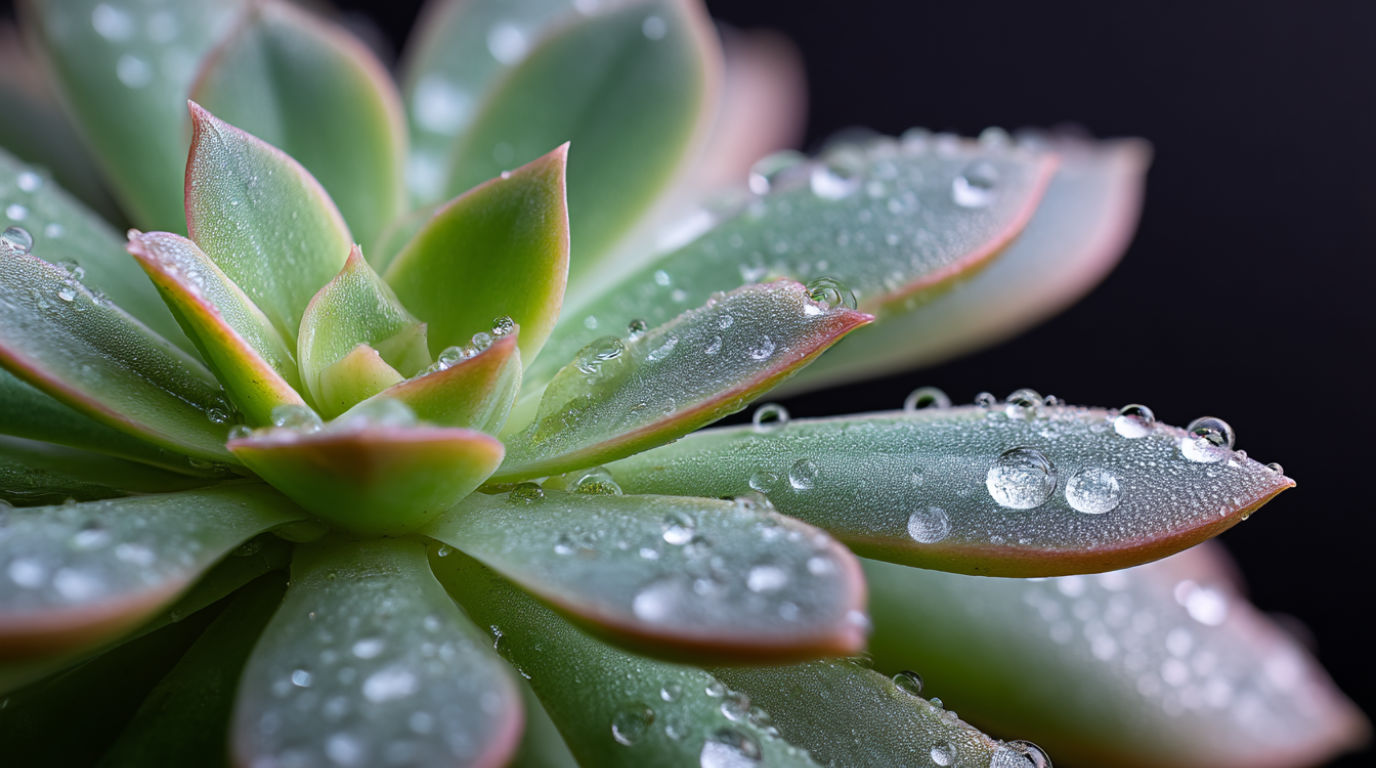
Finding the Perfect Watering Schedule
The most common cause of succulent death is overwatering. Unlike traditional houseplants, succulents have evolved to survive drought conditions and store water efficiently in their tissues. This adaptation means they need significantly less frequent watering than most plants.
Rather than following a rigid calendar schedule, water your succulents based on:
- Environmental conditions (temperature, humidity, season)
- Plant signals (physical appearance, soil dryness)
- Container and soil type (drainage capacity, moisture retention)
As a general guideline, most indoor succulents need watering approximately:
| Season | Indoor Frequency | Outdoor Frequency | Key Indicators |
|---|---|---|---|
| Spring/Fall | Every 7-10 days | Every 5-7 days | New growth appearing |
| Summer | Every 5-7 days | Every 3-5 days | Soil dries quickly |
| Winter | Every 14-21 days | Weather-dependent | Dormancy period |
Remember: These are starting points, not rules. Always check soil moisture before watering.
The “Soak and Dry” Method
The most effective watering technique for succulents is the “soak and dry” method. This approach mimics the natural desert rainfall pattern—occasional thorough soakings followed by extended dry periods.
How to do it:
- Wait until the soil is completely dry (1-2 inches deep)
- Water thoroughly until it flows from drainage holes
- Allow all excess water to drain completely
- Don’t water again until soil has dried out entirely
This method encourages healthy root development by prompting roots to grow downward in search of moisture. Shallow, frequent watering leads to weak surface roots and unhealthy plants.
Reading Your Plant’s Watering Needs
Succulents communicate their water needs through visible signals:
Signs of Underwatering:
- Leaves become thin and crispy
- Lower leaves dry and wither
- Leaf tips may brown
- Growth slows or stops
- Soil pulls away from pot edges
Signs of Overwatering:
- Leaves become soft and mushy
- Yellowing, translucent appearance
- Leaves fall off with slight touch
- Black spots indicate rot
- Soil remains consistently damp
Advanced Watering Techniques
As you become more experienced with succulent care, consider these specialized watering approaches:
Bottom Watering
Place pots in a shallow tray of water for 10-15 minutes, allowing soil to absorb moisture from the bottom up. This technique:
- Encourages deeper root growth
- Prevents soil disturbance
- Reduces risk of crown rot
Seasonal Adjustments
Reduce watering frequency by 30-50% during:
- Winter months when growth slows
- Cool temperature periods
- Times of low light exposure
Increase watering frequency by 20-30% during:
- Active growth seasons
- Hot summer periods
- Times of bright, direct light
Pro tip: Water in the morning to allow excess moisture to evaporate during the day, reducing the risk of fungal issues and rot that can develop in consistently damp conditions overnight.
Succulent Fertilizing and Maintenance
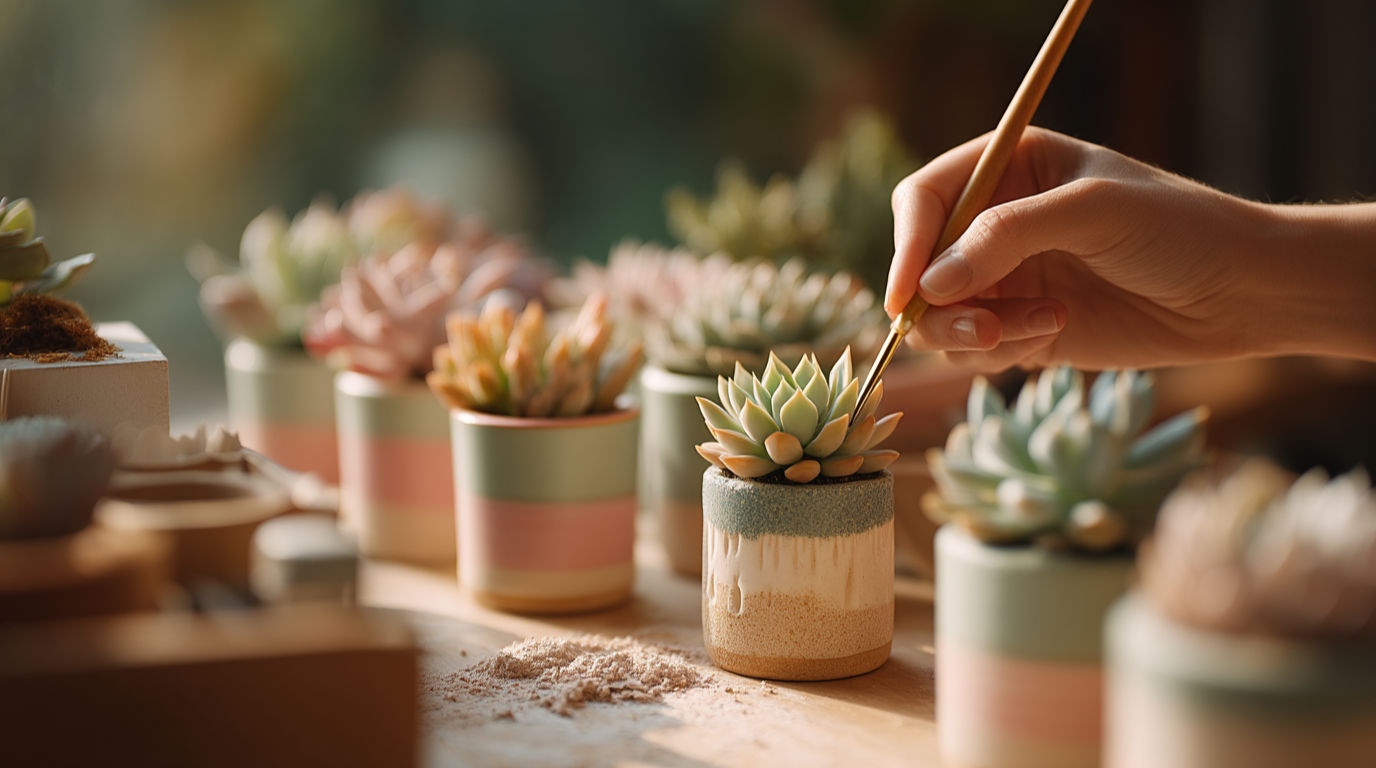
Nutrient Needs for Healthy Growth
Unlike many houseplants, succulents have modest fertilizer requirements. In their natural habitats, they’ve adapted to survive in nutrient-poor soils. However, some supplemental feeding helps potted succulents thrive and maintain vibrant colors.
The key to successful fertilizing is providing balanced nutrients in diluted form during active growth periods. Avoid over-fertilizing, which can cause weak, leggy growth and potentially burn roots.
Choosing the Right Fertilizer
Select fertilizers with these characteristics:
| Fertilizer Type | NPK Ratio | Best For | Application Method |
|---|---|---|---|
| Balanced Liquid | 10-10-10 | General succulent health | Diluted in water |
| Low-Nitrogen | 5-10-10 or 2-7-7 | Preventing leggy growth | Diluted in water |
| Specialized Cactus | Varies | Desert-type succulents | As directed |
| Organic Slow-Release | Varies | Long-term feeding | Top dressing |
Pro tip: Always dilute standard fertilizers to ¼ to ½ the recommended strength for succulents. This prevents nutrient burn while still providing essential elements for growth.
Seasonal Fertilizing Schedule
Follow this seasonal approach to match your succulents’ natural growth cycles:
- Spring (Primary feeding time)
- Apply fertilizer when new growth appears
- Fertilize every 4-6 weeks through spring
- Use a balanced or low-nitrogen formula
- Summer
- Reduce to light fertilizing every 6-8 weeks
- Skip fertilizing during extreme heat periods
- Water thoroughly before applying any fertilizer
- Fall
- Final light feeding in early fall
- Stop as daylight hours decrease
- Use potassium-rich formula to prepare for winter
- Winter
- No fertilizer needed during dormancy
- Resume when new growth appears in spring
- Focus on proper light and minimal watering
Essential Maintenance Tasks
Beyond watering and fertilizing, regular maintenance keeps your succulents healthy and attractive.
Pruning and Cleaning
Regular grooming sessions benefit your succulents by:
- Removing dead or damaged leaves
- Improving air circulation
- Preventing pest hideouts
- Maintaining attractive shapes
Pruning techniques:
- Use sharp, clean scissors or pruning shears
- Remove entire leaves at the base rather than cutting partially
- Prune in spring before the main growing season
- Allow cut areas to callus (dry) before watering
For dusty plants, gently clean leaves using:
- A soft brush (small paintbrush or makeup brush)
- Compressed air (gentle bursts from a distance)
- Never use leaf shine products on succulents
Dealing with Common Pests
Even with perfect care, succulents occasionally face pest challenges. Early detection and treatment prevent serious infestations.
| Pest | Signs | Treatment |
|---|---|---|
| Mealybugs | White cottony clusters in leaf joints | Isopropyl alcohol on cotton swab; neem oil spray |
| Spider Mites | Fine webbing, stippled discoloration | Increase humidity; insecticidal soap spray |
| Scale | Brown bumps that don’t brush off | Manual removal; insecticidal soap |
| Fungus Gnats | Small flies around soil; larvae in soil | Allow soil to dry completely; sticky traps; hydrogen peroxide solution |
| Aphids | Clusters of small insects on new growth | Strong water spray; insecticidal soap |
Natural pest prevention:
- Maintain good air circulation around plants
- Avoid overwatering
- Quarantine new plants for 2 weeks
- Regularly inspect leaf joints and soil surface
- Introduce beneficial insects outdoors (ladybugs, lacewings)
Repotting Guidelines
Most succulents need repotting every 2-3 years as they outgrow their containers or deplete soil nutrients. Signs it’s time to repot include:
- Roots growing through drainage holes
- Water running straight through without absorption
- Top-heavy plants that become unstable
- Significantly slowed growth
- Soil that no longer drains properly
The best time to repot is at the beginning of the growing season (usually spring), giving plants time to establish before their active growth period.
When repotting:
- Select a container 1-2 inches larger in diameter
- Use fresh, well-draining succulent soil
- Handle roots gently to minimize damage
- Keep plants dry for 5-7 days after repotting
- Resume normal care once established (about 2 weeks)
With appropriate fertilizing and regular maintenance, your succulents will remain healthy, vibrant, and attractive for many years.
Propagation Methods
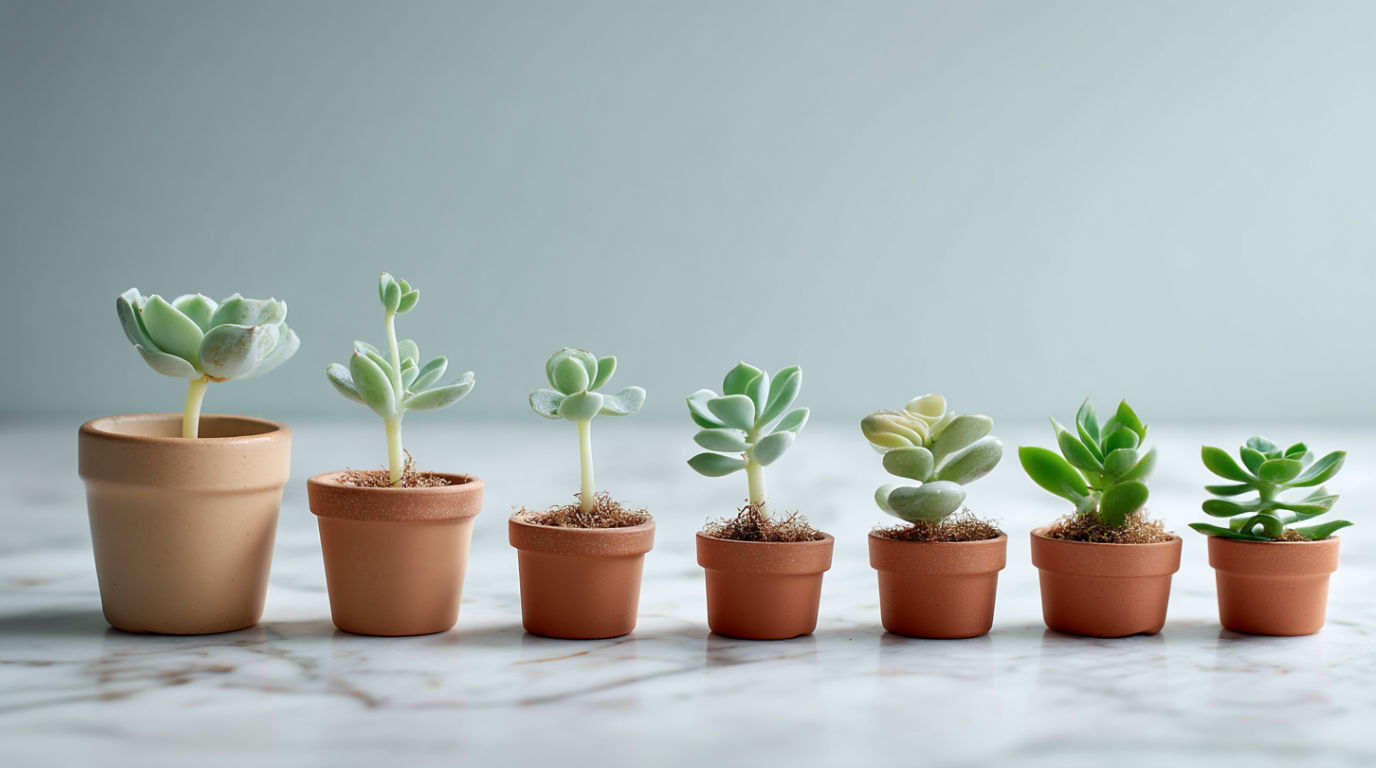
The Joy of Multiplying Your Collection
One of the most rewarding aspects of growing succulents is how easily they propagate. Their remarkable ability to grow entirely new plants from various plant parts means you can expand your collection with minimal cost. Propagation also lets you rescue struggling plants and share your succulent passion with friends and family.
Successful propagation depends on understanding which methods work best for different succulent types. Let’s explore the most effective techniques.
Leaf Propagation: Perfect for Rosette Succulents
Leaf propagation works exceptionally well for many rosette-forming succulents like Echeveria, Graptopetalum, and some Sedum varieties. This method is simple but requires patience.
Step-by-Step Leaf Propagation Guide:
- Select healthy leaves – Choose mature, unblemished leaves from the middle of the plant
- Remove cleanly – Gently twist and pull the entire leaf from the stem (including the base)
- Allow callusing – Let leaves dry in a warm, bright place for 2-5 days until the wound forms a callus
- Prepare growing medium – Use well-draining succulent soil or a 50/50 mix of soil and perlite
- Place leaves on soil – Lay callused leaves on top of soil (don’t bury them)
- Mist occasionally – Light misting every few days (soil should never be soggy)
- Wait for roots and rosettes – New roots and tiny rosettes will form at the leaf base (2-8 weeks)
- Reduce misting – Once the new plant has established roots, switch to normal succulent watering
- Remove mother leaf – The original leaf will eventually shrivel as the new plant grows
Success rates vary significantly based on:
- Succulent species (some propagate more readily than others)
- Environmental conditions (warm, bright, indirect light works best)
- Proper callusing (rushing this step often leads to failure)
- Minimal disturbance during early growth stages
Offsets/Pups: The Simplest Method
Many succulents naturally produce offsets or “pups” — small clones that form around the base of the mother plant. This propagation method offers the highest success rate and fastest results.
Popular succulents that readily produce offsets include:
- Aloe
- Haworthia
- Agave
- Sempervivum
- Many Echeveria varieties
Harvesting and Planting Offsets:
- Wait for development – Allow pups to grow to at least 1/5 the size of the mother plant
- Carefully separate – Using clean tools, gently separate the offset from the mother plant
- Check for roots – Some offsets already have their own root systems
- Allow callusing – Let the separated pup dry for 1-2 days if there’s a fresh wound
- Plant in soil – Place in well-draining succulent soil mix
- Delay watering – Wait 5-7 days before first watering to prevent rot
- Grow as normal – Treat as a mature plant with standard succulent care
This propagation method typically produces a flowering-size plant in 1-2 growing seasons, much faster than leaf propagation.
Stem Cuttings: Ideal for Trailing and Branching Varieties
Stem cutting propagation works best for:
- Trailing succulents (String of Pearls, Burro’s Tail)
- Woody-stemmed varieties (Jade Plant, Aeonium)
- Tall, leggy plants that need rejuvenation
Stem Cutting Process:
| Step | Details | Timing |
|---|---|---|
| Select healthy stem | Choose stems with multiple leaves, avoid flowering stalks | Any time during growing season |
| Make clean cut | Use sterile scissors/knife, cut 3-6 inches from tip | Morning is ideal (plants are well-hydrated) |
| Remove lower leaves | Clear 1-2 inches of the bottom of the stem | Immediately after cutting |
| Allow callusing | Dry cutting in warm, indirect light | 3-7 days (until end forms hard callus) |
| Prepare potting medium | Well-draining succulent mix | While waiting for callusing |
| Plant cutting | Insert 1-2 inches deep in soil | After complete callusing |
| Water sparingly | First water after 7-10 days | When soil is completely dry |
Pro tip: For difficult-to-root varieties, try dipping the callused end in rooting hormone before planting to increase success rates.
Specialized Propagation Techniques
For experienced growers, these advanced techniques offer additional propagation options:
Water Propagation
Some succulents can develop roots in water:
- Place callused cutting with the end just above water level
- Wait for roots to develop (change water weekly)
- Once roots reach 1-2 inches, transfer to soil
Beheading
Ideal for leggy plants with elongated stems:
- Cut rosette with 1-2 inches of stem attached
- Follow stem cutting procedures for the top
- Keep the rooted base which will often produce multiple new plants
Division
For clustered succulents like Haworthia and Aloe:
- Remove entire plant from pot
- Gently separate natural divisions where roots are already distinct
- Repot each division in fresh soil
- Water after 5-7 days
With these propagation techniques in your toolkit, you’ll be able to multiply your favorite varieties, rejuvenate aging plants, and share the joy of succulents with others—all while developing a deeper understanding of these fascinating plants.
Seasonal Succulent Care
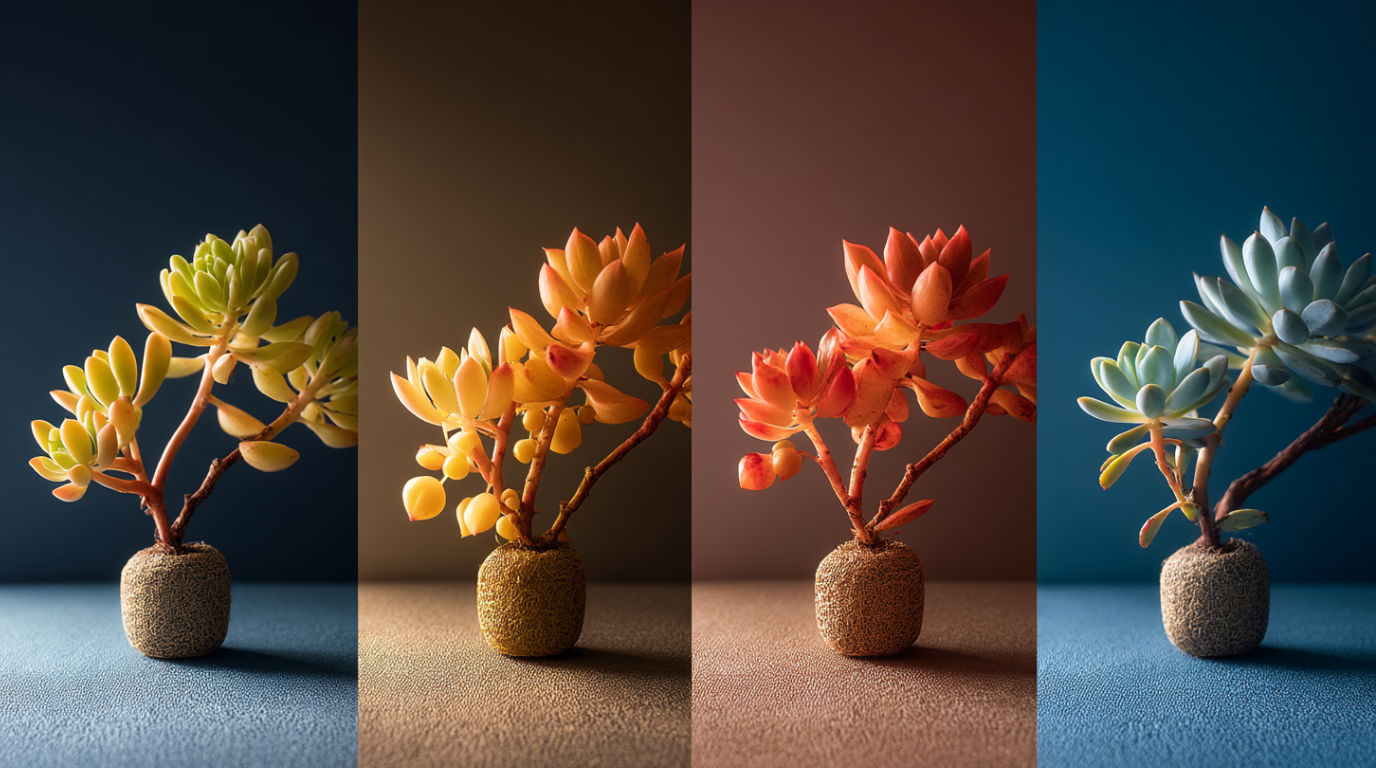
Understanding Succulent Growth Cycles
Succulents, like all plants, respond to seasonal changes in light, temperature, and day length. Understanding these natural growth rhythms allows you to provide optimal care throughout the year and avoid common seasonal mistakes.
Most succulents fall into one of two growth patterns:
| Growth Pattern | Active Seasons | Dormant Seasons | Common Examples |
|---|---|---|---|
| Summer Growers | Spring through Fall | Winter | Echeveria, Graptoveria, Sedum, Sempervivum |
| Winter Growers | Fall through Spring | Summer | Aeonium, Aloe, many Haworthia, some Kalanchoe |
Matching your care routine to these natural cycles significantly improves plant health and appearance. Let’s explore specific seasonal adjustments for each time of year.
Spring: The Awakening Period
Spring marks the primary growth season for summer-growing succulents as they emerge from winter dormancy. This is the time when your plants will show the most dramatic changes.
Spring Care Checklist:
- Gradually increase light exposure
- Move plants to brighter locations incrementally
- Reintroduce outdoor succulents to direct sun over 1-2 weeks to prevent sunburn
- Resume regular watering schedule
- As soil temperature warms, plants can utilize more water
- Transition from winter’s minimal watering to more frequent watering
- Wait until nighttime temperatures consistently stay above 50°F (10°C)
- Begin fertilization cycle
- Start with diluted fertilizer once new growth appears
- Use balanced or low-nitrogen formula at ¼ to ½ strength
- Repot as needed
- Ideal time for repotting after winter dormancy
- Refresh soil and move to larger containers if necessary
- Address any root issues before the peak growing season
- Monitor for pests
- Spring often brings increased pest activity
- Check plants weekly for early signs of infestation
- Address issues promptly before peak growing season
Summer: Managing Heat and Light
Summer presents unique challenges, especially for indoor succulents moved outdoors. High temperatures and intense sunlight require careful management to prevent damage.
Summer Care Strategies:
- Adjust watering frequency
- Water more frequently but ensure soil dries completely between waterings
- Water in early morning to prevent evaporation and fungal issues
- For summer-dormant species, reduce watering significantly
- Protect from extreme conditions
- Shield plants from afternoon sun in hot climates (temperatures over 90°F/32°C)
- Provide 30-50% shade cloth for outdoor collections during heatwaves
- Move container plants to shadier locations during extreme heat
- Monitor humidity and airflow
- Increase air circulation in humid climates to prevent rot
- In very dry climates, group plants together to maintain humidity
- Continue limited fertilizing
- Reduce to minimal feeding during hot months
- Stop fertilizing summer-dormant varieties completely
- Watch for sunburn signs
- Brown or white patches on leaves indicate sun damage
- Move affected plants to less intense light immediately
Pro tip: Create a summer care calendar based on your local climate conditions, tracking temperature trends to anticipate when adjustments might be needed.
Fall: Preparation for the Changing Season
Fall requires transitional care as summer-growing varieties prepare for dormancy and winter growers begin their active period.
Fall Adjustment Guide:
- Reduce watering frequency
- Allow more time between waterings as temperatures cool
- For summer growers, gradually extend the dry period between waterings
- For winter growers, begin more regular watering as their growth cycle activates
- Modify light exposure
- Reposition plants to maximize light as days shorten
- Clean windows to improve light penetration
- Consider supplemental grow lights for indoor collections
- Final feeding
- Provide last light fertilization for summer growers
- Begin regular feeding schedule for winter-active varieties
- Prepare for temperature changes
- Bring outdoor plants indoors when nighttime temperatures approach 40°F (4°C)
- Acclimate plants gradually to indoor conditions
- Position away from heater vents and cold drafts
- Pest prevention
- Thoroughly inspect plants before bringing indoors
- Treat any issues before introducing to indoor collection
- Consider preventative neem oil application
Winter: Supporting Dormancy and Indoor Care
Winter care focuses on maintaining minimal growth rather than encouraging active development for most succulents.
Winter Maintenance Focus:
- Adjust watering dramatically
- Reduce watering by 50-75% for dormant varieties
- Water only when soil has been completely dry for several days
- Use slightly warmer water to prevent root shock
- Maximize available light
- Move plants to sunniest available windows (typically south-facing)
- Rotate plants regularly to prevent leaning
- Supplement with grow lights if natural light is insufficient (12-14 hours daily)
- Maintain appropriate temperatures
- Keep most succulents between 50-60°F (10-15°C) during winter nights
- Prevent exposure to freezing temperatures
- Avoid placing plants near cold windows or hot radiators
- Halt fertilization for dormant species until spring
- Monitor moisture levels carefully
- Indoor heating creates drier air but slower soil evaporation
- Water only when leaves show slight wrinkling or softening
- Pour away any water that collects in saucers or outer decorative pots
Season-specific challenges chart:
| Season | Primary Challenges | Prevention Strategies |
|---|---|---|
| Spring | Sunburn when reintroducing to stronger light | Gradual light increases; temporary shade cloth |
| Summer | Heat stress; excessive sun; rapid soil drying | Morning watering; afternoon shade; proper soil mix |
| Fall | Temperature fluctuations; reduced light | Careful monitoring; timely indoor transition |
| Winter | Overwatering; insufficient light; dry indoor air | Minimal watering; supplemental lighting; proper placement |
By adjusting your care regimen to match these seasonal patterns, you’ll work with your succulents’ natural cycles rather than against them, resulting in healthier, more vibrant plants throughout the year.
Conclusion: Troubleshooting and Final Tips
After learning about the essential aspects of succulent care, you now have the knowledge to help your plants not just survive, but truly thrive. Even with great care, however, you might encounter some challenges along the way. Here are solutions to some common problems:
Leggy or stretched plants: This typically indicates insufficient light. Gradually move your plant to a brighter location and consider supplemental lighting during darker months. For severely stretched plants, propagation through beheading might be your best option.
Leaf drop: If your succulent is losing leaves, especially from the bottom, check your watering habits first. Overwatering causes soft, mushy leaves that fall off easily, while underwatering leads to crispy, dried leaves. Adjust accordingly and remember that some leaf shedding from the bottom is natural as plants grow.
Discolored leaves: Yellow or translucent leaves usually signal overwatering, while brown, crispy edges indicate underwatering or sunburn. Pay attention to patterns – center discoloration differs from edge issues.
Pest infestations: Isolate affected plants immediately to prevent spreading. Treat with appropriate methods as outlined in the maintenance section, and monitor closely for several weeks after treatment.
Remember these key principles for succulent success:
- Light is essential – most problems stem from insufficient brightness
- Well-draining soil prevents the majority of root issues
- It’s better to underwater than overwater
- Seasonal adjustments make a significant difference
- Patience is crucial – succulents grow slowly but reward your care
As you continue your succulent journey, expand your knowledge through local plant clubs, online forums, and specialty nurseries. Each variety may have specific needs beyond these general guidelines.
The most important advice? Observe your plants closely. They communicate their needs through visible changes, and learning to read these signals is the true art of successful succulent growing. With time and attention, you’ll develop an intuitive understanding of what your particular plants need to flourish.
Enjoy the process of growing these remarkable plants, and don’t be afraid to experiment as your confidence grows. Happy succulent gardening!

